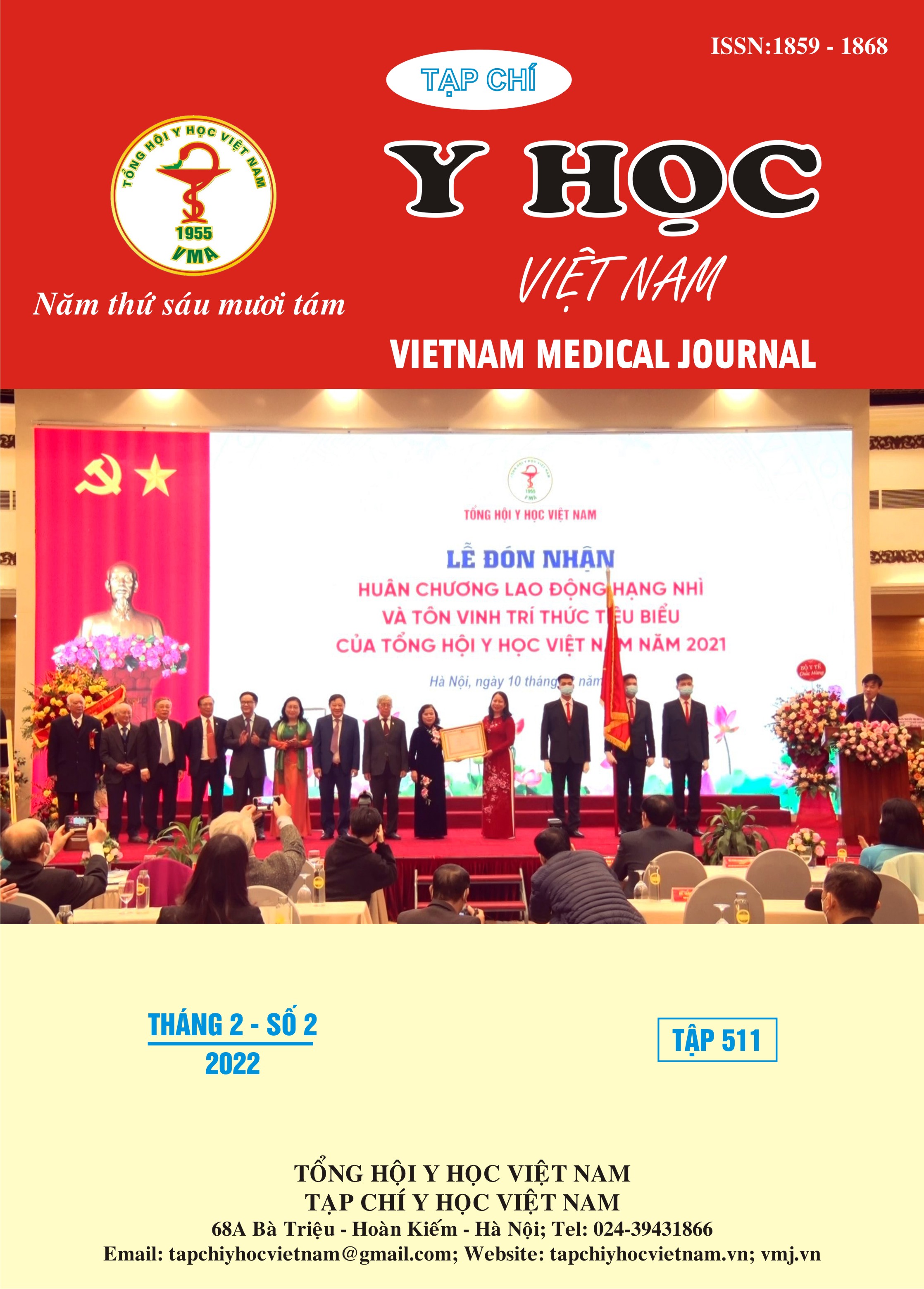FACTORS AFFECTING SUCCESS RATE AND STONE FREE RATE OF FLEXIBLE URETEROSCOPY FOR RENAL STONES AT VIET TIEP HOSPITAL
Main Article Content
Abstract
Objective: To analyze the factors affecting success rate and stone free rate of flexible ureteroscopy and laser lithotripsy (FURSL) for renal stone. Materials and methods: Data on a total of 40 patients with FURSL for renal stones at Viet Tiep hospital between October 2020 and June 2021, were prospectively analyzed. Factors associated were evaluated using SPSS 20.0. Univariate and multivariate analyses were done to determine predictive factors affecting success rate and stone free rate. Results: Success in operation: 85%, failure: 15%. A multivariate assessment revealed three independent factors influencing success rate (p<0.05): stone size (p=0,03), stone number (p=0,001), stone location (p=0,011) and not influencing (p>0,05): operation history (p=0,499), using ureteral access sheath (p=0,555), stone displacement (p=0,376), angle between infundibula and renal pelvis (p=0,533). Stone free rate after 1 month: 92,5%. Factors influencing Stone free rate (p<0.05): stone number (p=0,01) anh factors not influencing (p>0,05): stone size (p=0,141), stone location (p=0,083), angle between infundibula and renal pelvis (p=0,1). Conclusions: The results of the current study indicated that operation history, stone size, stone number, stone location, using ureteral access sheath, stone displacement and angle between infundibula and renal pelvis were factors affecting success rate and stone free rate after FURSL. However, experience of the surgeon play an important role. FURSL is good and effective indication for treatment of renal stone ≤ 20 mm, especially for the cases treated with surgical procedures before.
Article Details
Keywords
Flexible ureteroscopy, renal stone
References
2. Phạm Ngọc Hùng (2018). Nghiên cứu ứng dụng kỹ thuật nội soi niệu quản ngược dòng điều trị sỏi thận bằng ống soi mềm. Luận án tiến sĩ y học, Học Viện Quân Y.
3. Ito H, Kawahara T, Terao H, Ogawa T, Yao M, Kubota Y, Matsuzaki J (2012), “The most reliable preoperative assessment of renal stone burden as a predictor of stone-free status after flexible ureteroscopy with holmium laser lithotripsy: a single-center experience”, Urology by Elsevier Inc, 80: pp. 524-528.
4. Pearle MS, Lotan Y (2012), “Urinary Lithiasis: Etiology, Epidemiology, and Pathogenesis”, chapter 45, Section XI in Alan J. Wein (eds): CampbellWalsh Urology, Saunders Elsevier 10th edi: pp. 1257-86.
5. Perlmutter AE, Talug C, Tarry WF, Tarry WF, Zaslau S, Mohseni H, Kandzari SJ (2008), “Impact of stone location on success rates of endoscopic lithotripsy for nephrolithiasis”, Urology by Elsevier Inc, 71: pp. 214-217.
6. Resorlu B., Oguz U., Resorlu E. B. et al (2012), “The impact of pelvicaliceal anatomy on the success of retrograde intrarenal surgery in patients with lower pole renal stones”, Urology, 79: pp. 61–66.
7. Stoller ML (2013), “Urinary stone disease” in McAninch JW and Lue TF (eds): Smith and Tanagho’s General Urology. McGraw - Hill 18th edi: pp. 249-7.


